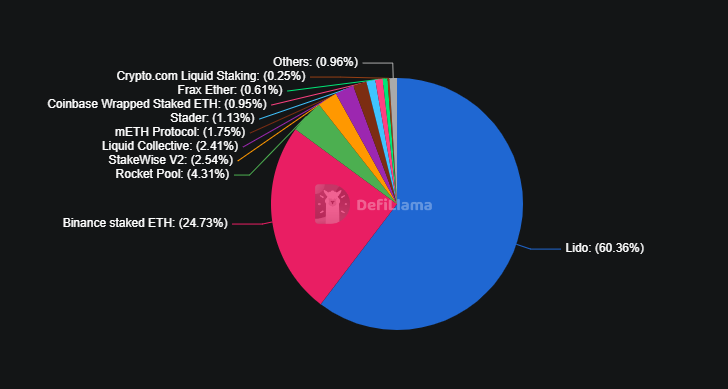Ethereum gained support from increased staking, as deposits have expanded the staking supply by 28% since the beginning of the year. Staking is a source of passive income for idle ETH reserves and also serves as a long-term confidence signal.
Ethereum staking accelerated in 2025, with deposits increasing 28% since January. The staked ETH supply currently exceeds 36 million tokens and is hovering near an all-time high. The influx of staking occurred after the Dencun upgrade, allowing you to stake up to 2,048 ETH instead of just 32 ETH.
Historically, high levels of staking have correlated with ETH rallies. It is also expected that Beacon Chain will soon lock up 35% of the ETH supply, changing the ownership and price pressure structure of the token.
ETH locked for staking increases potential DeFi collateral and boosts the Ethereum economy.
Inflows into the Beacon Chain contract occurred at various price levels. Although the record level failed to push ETH to a new record, it still pushed it above its current price range of around $3,500.
Whales lead rush to stake more ETH
Current staking changes have resulted in increased activity from whale wallets with over 10,000 ETH. From Q4 to date, 4.1 million ETH has been generated from whale wallets. Most of the staking growth in 2025 will come from Binance’s pools, which currently hold over 24% of staked ETH.

Binance’s staking pool has grown in influence over the past six months, accounting for over 25% of LST Ethereum tokens. |Source: DeFi Llama
The large-scale staking feature allowed whales to migrate to Beacon Chain smart contracts more efficiently, avoiding the risks of using a large number of small nodes and taking a long time to de-stake.
In addition to the ETH currently staked, both Treasury holders and ETFs hold large amounts of tokens, with the potential to stake up to 12 million ETH. Potential sources of validator stake include old ICO treasuries, old whales, early ETH buyers, etc.
With Ethereum staking, you can earn up to 6.5% from your staking depending on the mode you choose. A big part of the rush to staking is the ability to receive Liquid Staking tokens and continue to tap into the value of your locked ETH.
Validator queue still requires long wait times
Staking ETH requires a commitment, as unstaking can take up to 43 days. Therefore, locked ETH remains off the market and cannot be sold immediately.
As of November 13th, the exit queue waiting time to unstake ETH is 37 days and can exceed 40 days in some cases. Approximately 2.15 million ETH is awaiting de-staking. At the same time, depositors must wait 21 days to participate in the smart contract and generate yield and rewards.
Some of the revenue between validators comes from stock consolidation. ETH is tightly held as a whole, and the expectation is that this asset will play a strategic role in DeFi and traditional finance. LST also provides a way to trade and buy ETH, which is freely available for your needs.
ETH is also flowing into long-term storage addresses, 27M It is already stored in your self-storage wallet.


